Maine’s Eastern Trail
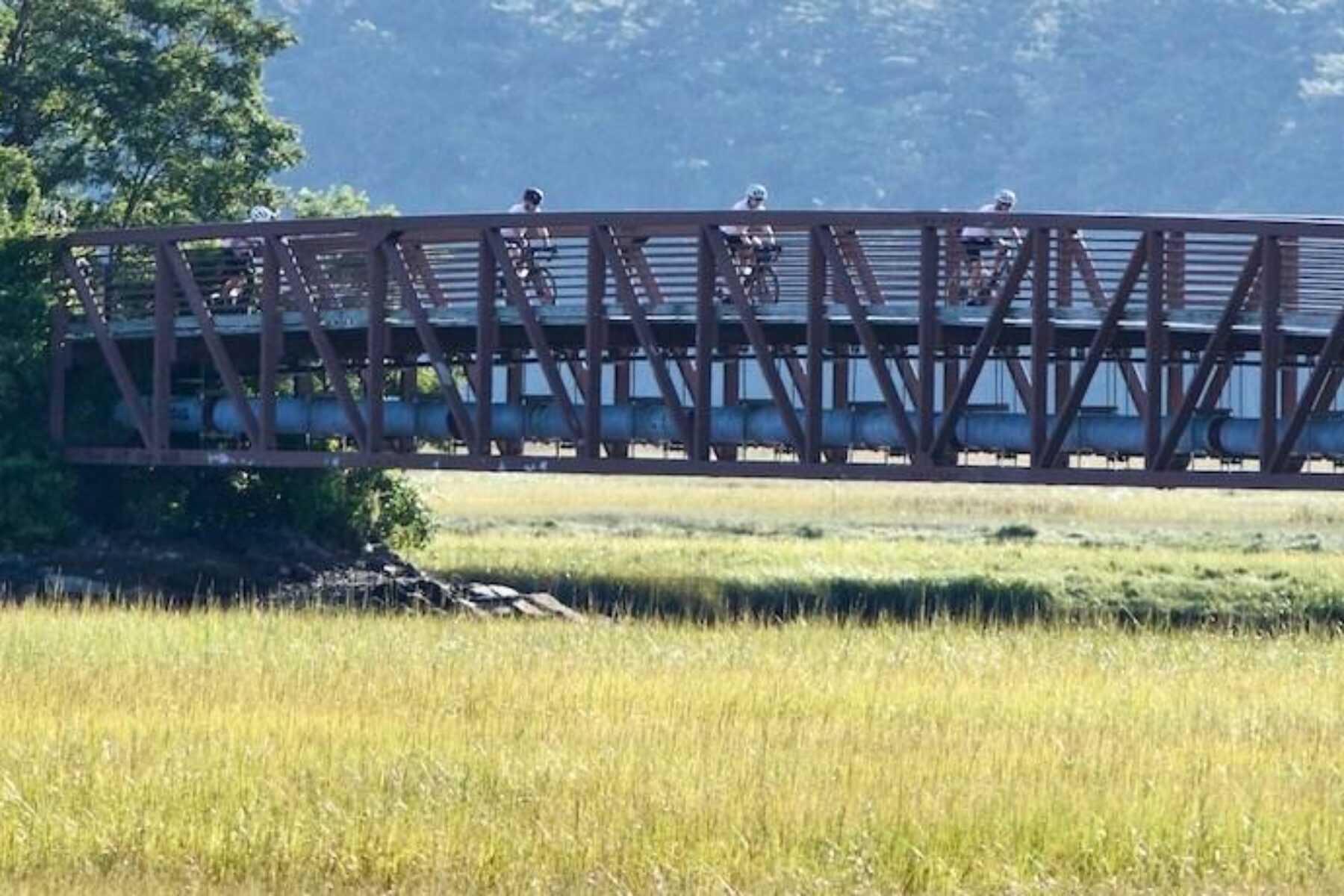

September 2022 Update: This summer, Rails-to-Trails Conservancy announced that Maine’s Eastern Trail would join its Rail-Trail Hall of Fame—an exemplary group of rail-trails nationwide celebrated for the social, economic and quality-of-life value they bring to the communities they serve. The 2022 winner—the first Hall of Fame rail-trail in Maine—was selected by public vote from among three worthy nominees. A pictorial of the trail will also be included in the Fall 2022 issue of Rails to Trails magazine.
Trail of the Month: March 2022
“In a lot of ways, the Eastern Trail is a model of what could happen in the state.”
—Jeremy Cluchey, volunteer member of the Maine Trails Coalition
A couple times a week, Bob Hamblen takes to the Eastern Trail on his bike, riding through various sections of the route that traverses 24 miles of southern Maine’s spectacular coastline. While he sees it as “a win” wherever he ends up on the trail, the long-time Saco resident has his favorites.
Hamblen, a trustee on the Eastern Trail Alliance board, is especially fond of the South Portland portion, also known as the Greenbelt, that passes through neighborhoods and ends at Bug Light Park on Casco Bay, as well as the southern section from Biddeford to Kennebunk.
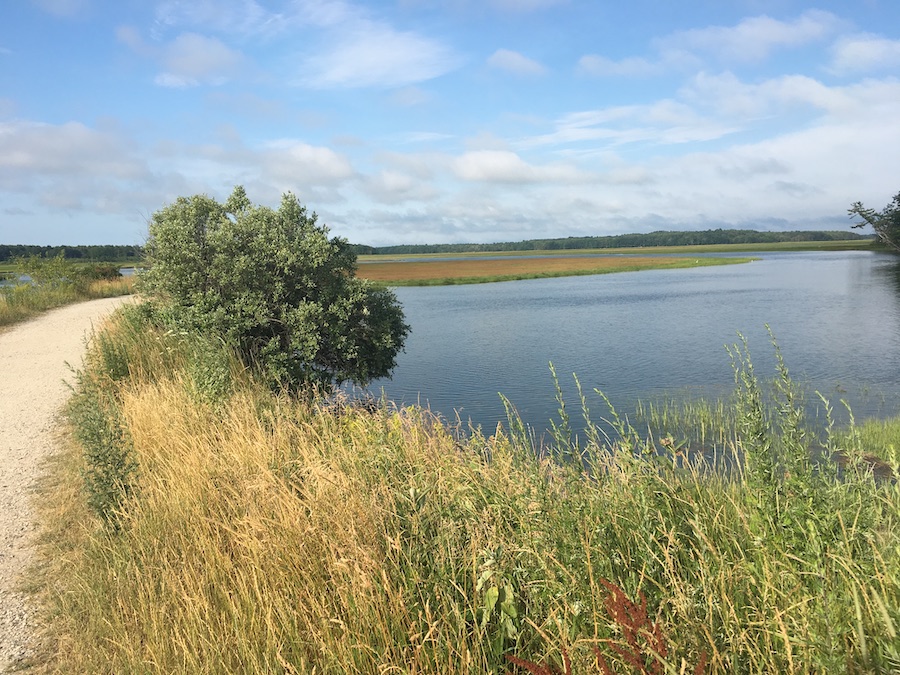
He isn’t the only one who can easily pinpoint favorite trail features. Eastern Trail Alliance Executive Director Jon Kachmar loves the stretch he calls “the gorge” near the town of Arundel. It is the area where the old Eastern Railroad blasted through rock more than century ago to make way for the train track. “It’s quiet, and it’s unique,” he said of the rocky ravine.
Allison Kenty, director of communications and public affairs for the Southern Maine Health Care Hospital in Biddeford, is partial to the wooded trail section that goes right by the hospital campus. In fact, she sometimes uses it to get out of her office and into the fresh air while she takes a conference call.
And for Jeremy Cluchey, a volunteer member of the Maine Trails Coalition, the best part of the Eastern Trail is the Scarborough Marsh, the 3,200-acre saltwater marsh where he has often taken part in the Maine Audubon’s annual Snowy Egret 5K run. “Every time I’ve done it, it’s been this glorious May day,” he said.
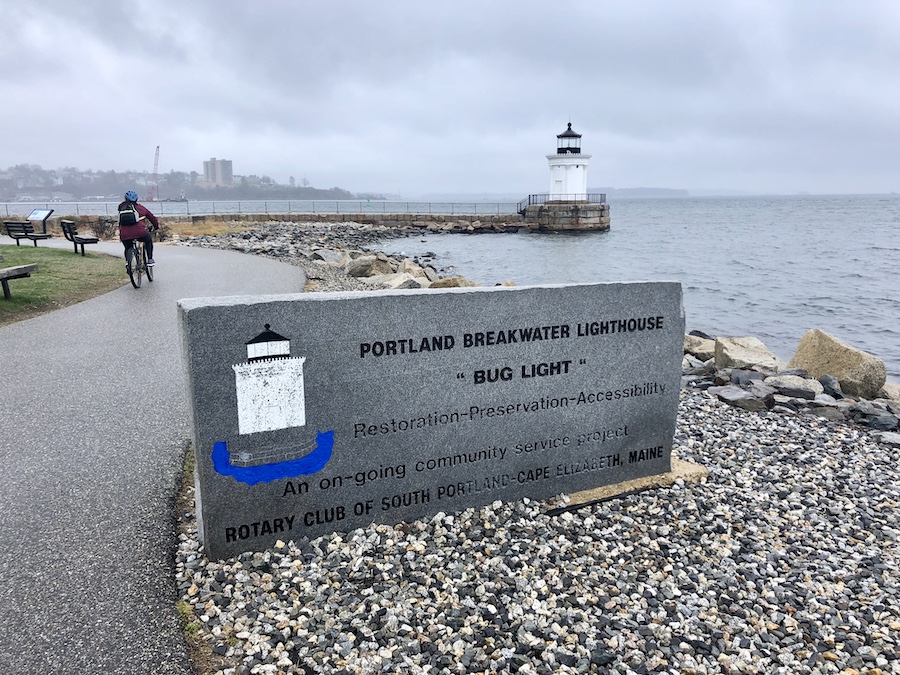
When it comes to a trail as varied as the Eastern Trail, it should come as no surprise that everyone seems to gravitate to different features. Kachmar says the diversity of the Eastern Trail is one of its strong suits—the thing that makes the trail such a treasure.
Along with Bug Light—the area’s famous lighthouse, dubbed so for its small size—Scarborough Marsh and the charming South Portland neighborhoods, the Eastern Trail also passes by areas of dense forest and one particularly lovely 7-mile stretch of sandy beachfront at Old Orchard Beach.
A Model for Maine
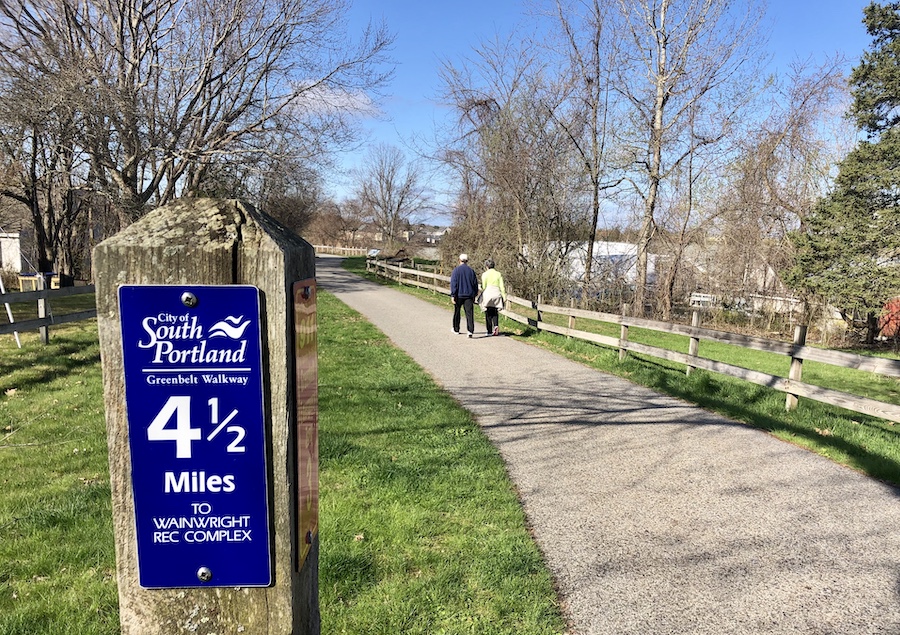
There is no question that the Eastern Trail is beloved in the communities it passes through, including South Portland, Scarborough, Saco, Old Orchard Beach, Biddeford, Arundel and Kennebunk.
“It has become a goal for multiple communities to see [the Eastern Trail] built within their borders,” Hamblen said. “It exists in seven towns now, with five to go. Towns that would ordinarily have little reason to communicate now have a common goal: to finish the Eastern Trail.”
The trail’s place in the community is a product of about three decades of work. The dream of the trail formed in the early 1990s, and the Eastern has been expanding gradually through the years.
The original route was built by the old Eastern Railroad, whose tracks traveled from Boston to Portland. The train started in the 1840s and ran through the 1940s when service was suspended. After sitting idle for 20 years or so, the rail corridor was tapped in the 1960s as a route for a natural gas line. It’s a use that continues today, and Kachmar said the Eastern Trail works with Granite State Gas, receiving significant in-kind benefits from the utility and the ability to use easements for the trail.
The Eastern Trail’s track record in the community serves as an example for other aspiring trail groups in Maine, according to Cluchey. “In a lot of ways, the Eastern Trail is a model of what could happen in the state,” he said. “They have done really important work. We leverage that.”
Tom Sexton, the northeast regional director for Rails-to-Trails Conservancy, sees the Eastern Trail as a pioneer for other trail efforts in the region. “For Maine and the New England states, it’s been kind of an anchor,” he said of the Eastern Trail. “We needed those first trails to be the pioneers. It’s a great ambassador.”
RELATED: TOP 10 TRAILS IN MAINE
Goodbye Gaps
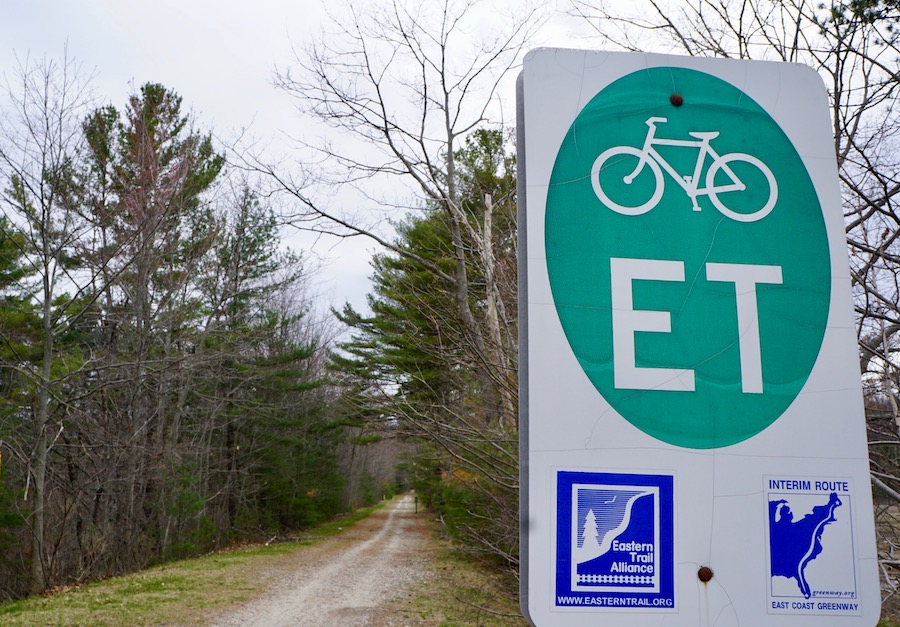
Even with the progress the Eastern Trail has made over the years, gaps still remain. In fact, Kachmar said there are currently three campaigns underway for projects to help fill in and lengthen the trail.
The most imminent of those projects is “Close the Gap,” a campaign to fill in a 1.6-mile section with off-road trail that would connect South Portland with Scarborough. Adding complexity to the project, the route includes two bridges: one over the Nonesuch River, and another larger bridge (spanning roughly 210 feet) over the rail yard just south of Pleasant Hill Road.
Kachmar reported in early March 2022 that the gap construction was expected to go out to bid within weeks—as soon as a final short easement was settled with a private property owner.
“It’s finally funded,” Kachmar said of the gap project. “We have raised just under $600,000, and we leveraged an additional $5.5 million in state and federal transportation funding.” Due to the challenging aspects of the project, construction is expected to take 18 to 24 months.
Another ongoing campaign is the “Over the River” drive that focuses on the Biddeford-to-Saco area. “That’s all on-road now, and we want to get that off-road,” Kachmar said, adding that the Over the River portion is especially important to provide access to the densely populated and lower-income neighborhoods in the area. A feasibility study was completed in 2022 that will help move the project forward.
Then, there is the “Blaze a Trail South” drive that would add an 11-mile section south from Kennebunk. A feasibility study was also completed on that section, which would largely follow the gas line.
Future Vision
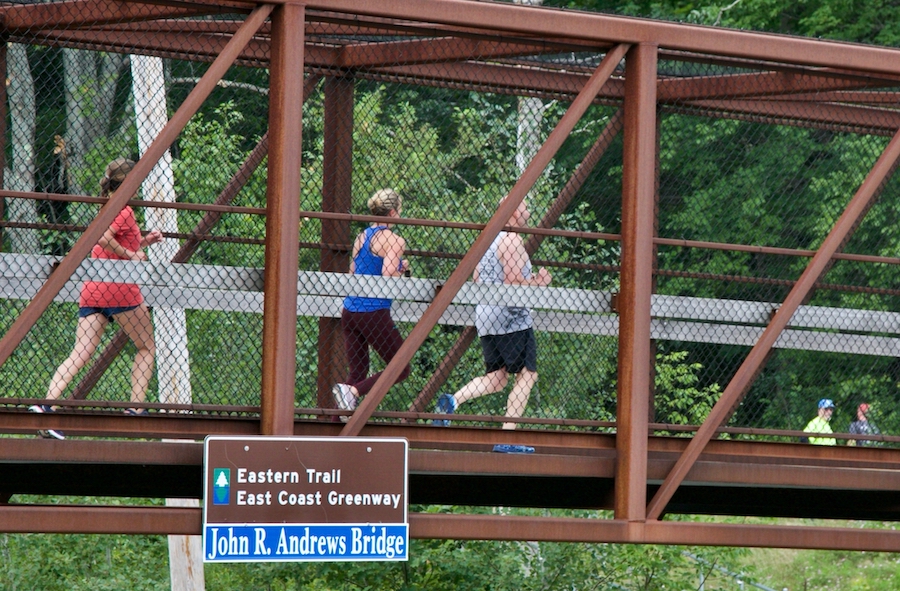
While the 24-mile section from South Portland to Kennebunk is the most-used portion of the Eastern Trail—attracting nearly 250,000 bike and pedestrian users in 2021—it makes up less than half of the entire route. Officially, the trail is a 65-miles-plus signed bike route that runs all the way from South Portland to Kittery, near the New Hampshire border.
Much of the attention focuses on the northern section because the South Portland-to-Kennebunk portion is mostly off road (except for the two gaps), while the section to the south is mostly on road, noted Kachmar.
In addition to its larger trail footprint, the Eastern Trail is part of two expansive multistate trail systems: the developing 3,000-mile East Coast Greenway that will connect trails from Maine to Florida, and the New England Rail-Trail Network, which aims to unite the region’s six states—Maine, Vermont, New Hampshire, Massachusetts, Rhode Island and Connecticut—by multipurpose trail.
Cluchey noted that efforts are underway all around the state to expand trails—many of which are being planned on long-unused rail lines. In October 2018, a group of trail advocates conducted a statewide meeting to address common issues.
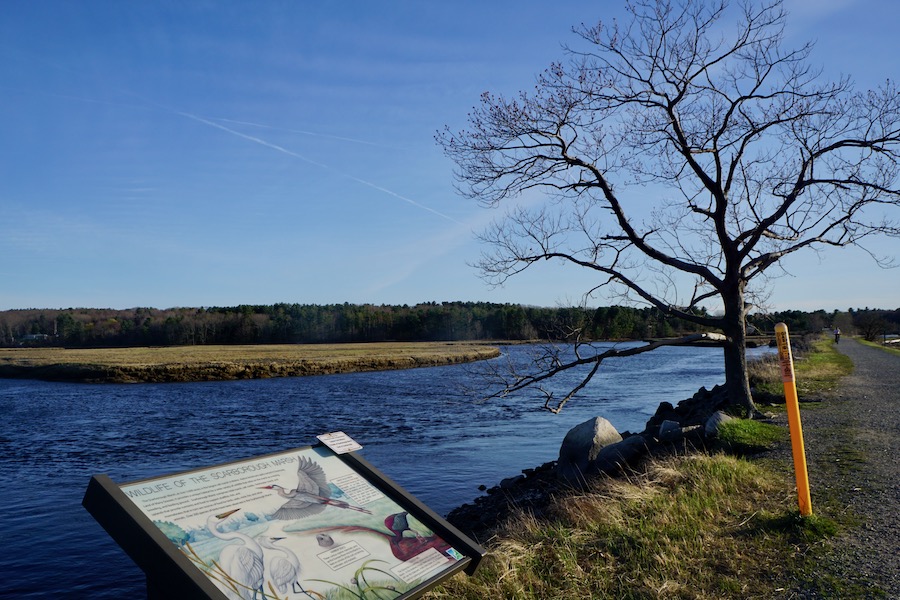
“Before, there were a lot of regional efforts,” Cluchey said. “But we kept running into state-level challenges.”
With funding, education and outreach emerging as community themes, the Maine Trails Coalition formally launched in September 2020. “We have done quite a bit since,” Cluchey said, noting that the group has been engaged in several bills at the Maine State Legislature.
For example, he said one of the bills dealt with creating a process for the state’s Department of Transportation to repurpose old rail lines—an important issue in a state that has many long-unused train routes. Among the Maine trails that are a priority for the future is the Mountain Division Trail, a rail-trail that will eventually run more than 50 miles from Fryeburg to Portland.
Big Benefits
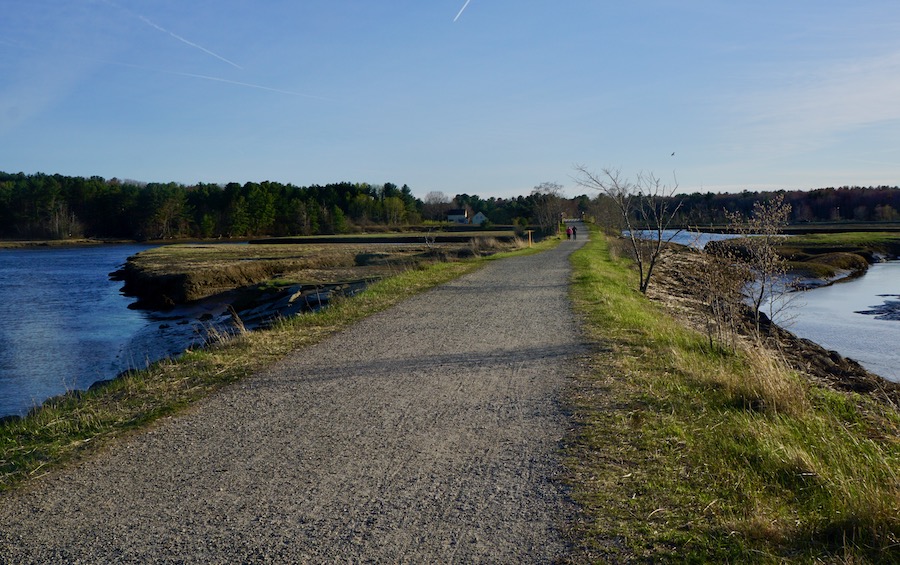
The Eastern Trail has long been popular, but its advocates say usage dramatically increased during the COVID pandemic. “To be able to see people flock to the Eastern Trail wanting and needing to get outside in a safe way was a very rewarding thing for all of us,” Hamblen said.
That is especially apparent in spots like the Southern Maine Health Care campus in Biddeford, where Kenty says a number of the hospital’s employees use the trail on a daily basis during breaks and lunchtimes to get out of the office to get some air and exercise.
The benefits to the economy have also grown. A recent economic impact study of the trail showed $44 million in annual economic impact to southern Maine.
“It’s an increasingly populated area,” Kachmar said, noting that the Eastern Trail serves as an invaluable resource for the growing region. “We hear a lot of appreciation just to get off the roads and get into the wilderness.”
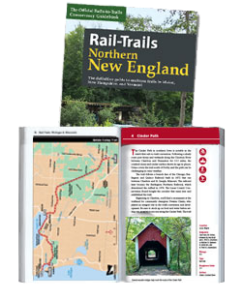
Northern New England Guidebook
Want to experience this trail or some of the other great trail destinations in Maine, New Hampshire and Vermont? You’ll find maps, helpful details and beautiful photos of 60 multiuse trails across the region in our Rail-Trails: Northern New England Guidebook, available in our online Trail Shop.
This blog has been updated and was originally posted on 03/15/22.

Donate
Everyone deserves access to safe ways to walk, bike, and be active outdoors.